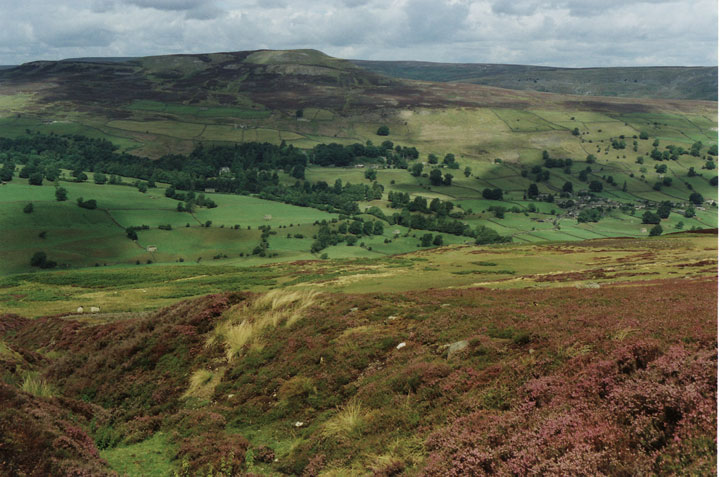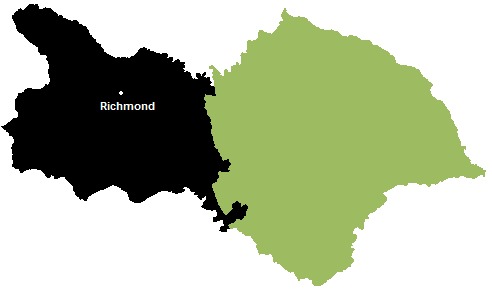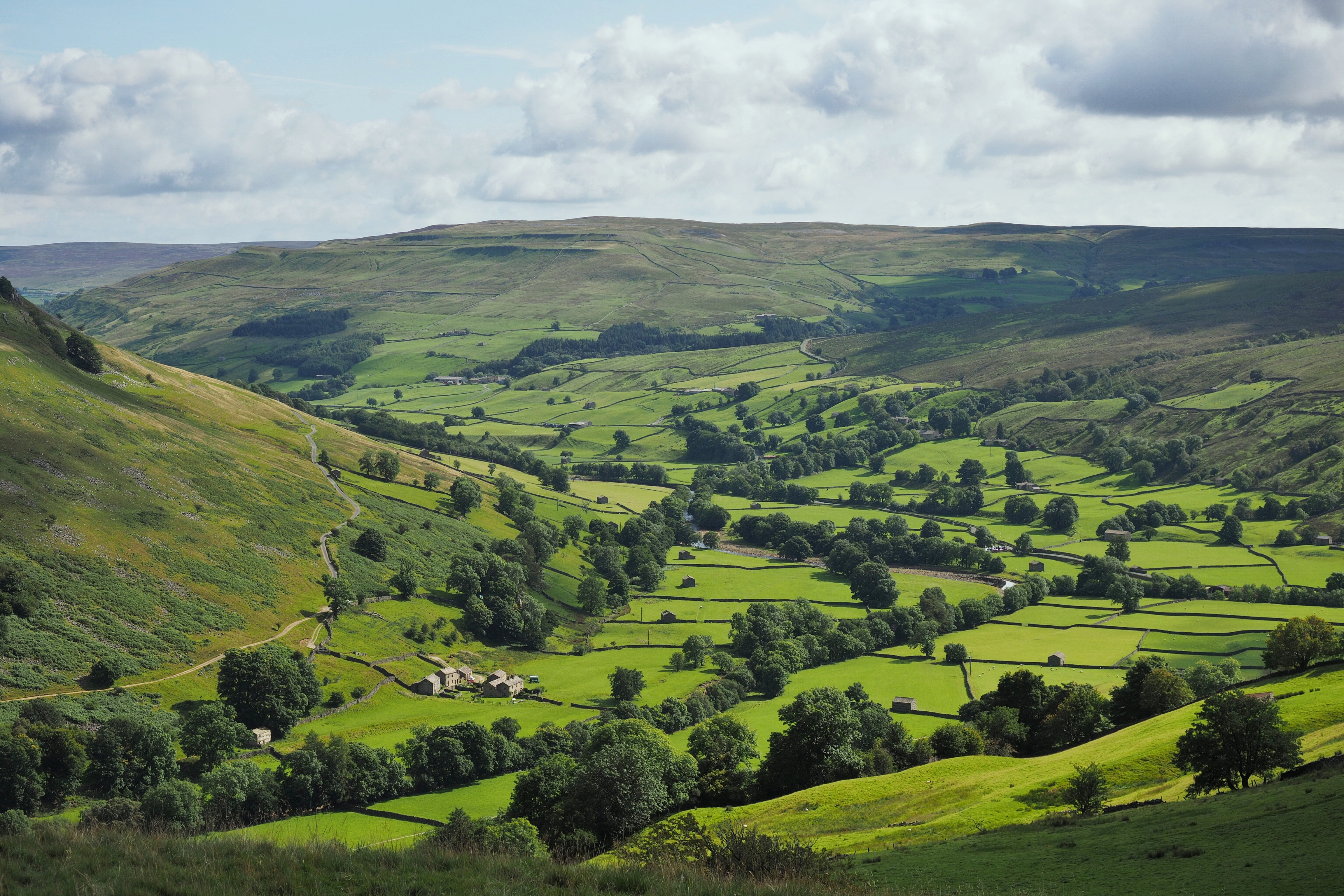|
Muker
Muker is a village and civil parishes in England, civil parish at the western end of Swaledale in North Yorkshire, England, within the Yorkshire Dales. The parish includes the hamlets and villages of Angram, Muker, Angram, Keld, North Yorkshire, Keld, Thwaite, North Yorkshire, Thwaite, West Stonesdale and Birkdale, North Yorkshire, Birkdale, as well as the Tan Hill Inn, the highest in England. At the 2001 census the civil parish had a population of 309, reducing to 249 at the 2011 census. In 2015, North Yorkshire County Council estimated the population to be 260. From 1974 to 2023 it was part of the district of Richmondshire, it is now administered by the unitary North Yorkshire Council. History The earliest recorded evidence of occupation in and around Muker takes the form of a skeleton found, with flints, on Muker Common in the early 20th century. Details suggest a burial of Bronze Age date. The name of Muker is of Norsemen, Norse origin, derived from the Old Norse ''mjó ... [...More Info...] [...Related Items...] OR: [Wikipedia] [Google] [Baidu] |
Church Of St Mary The Virgin, Muker
The Church of St Mary the Virgin is an Anglican church in the Upper Swaledale village of Muker, in North Yorkshire, England. It is one of four churches in the ecclesiastical ''Parish of Swaledale with Arkengarthdale''. The church was constructed in 1580, but previous to this, a chapel-of-ease had stood on the site which came under the Church of St Andrew in Grinton. Until the consecration of St Mary's, baptisms, weddings and funerals, had to be conducted at the church in Grinton. The Church of St Mary the Virgin, is noted for being a rare example of a house of worship being built during the Elizabethan era. Ecclesiastical background The parish registers for Grinton record that in August 1580, the Bishop of Chester, William Chaderton, visited to Until the consecration of the graveyard, deaths occurring in Muker, Keld and Upper Swaledale, involved carrying the deceased along the Corpse Road to Grinton for burial, some to to the east. This process could take three days to acco ... [...More Info...] [...Related Items...] OR: [Wikipedia] [Google] [Baidu] |
River Swale
The River Swale in Yorkshire, England, is a major tributary of the River Ure, which becomes the River Ouse, Yorkshire, River Ouse, that empties into the North Sea via the Humber Estuary. The river gives its name to Swaledale, the valley through which it flows. The river and its valley are home to many types of flora and fauna typical to the Yorkshire Dales. Like similar rivers in the region, the river carves through several types of rock and has features typical of both River erosion, river and glacial erosion. The River Swale has been a contributory factor in the settlements that have been recorded throughout its history. It has provided water to aid in the raising of crops and livestock, but also in the various mining activities that have occurred since Roman times and before. The river is said to be the fastest flowing in England and its levels have been known to rise in 20 minutes. Annual rainfall figures average 1800 mm p.a. in the headwaters and 1300 mm p.a. ... [...More Info...] [...Related Items...] OR: [Wikipedia] [Google] [Baidu] |
Swaledale
Swaledale is a valley in North Yorkshire, England. It is one of the Yorkshire Dales, which are part of the Pennines, and within the Yorkshire Dales National Park. It is named after the River Swale, which runs through it. Swaledale is the most northerly of the major dales. Geographical overview Swaledale runs broadly from west to east, from the high moors on the Cumbria–Yorkshire boundary at the watershed of Northern England to the market town of Richmond, where the dale meets the lowlands. Nine Standards Rigg, the prominent ridge with nine ancient tall cairns, rises on the watershed at the head of Swaledale. To the south and east of the ridge a number of smaller dales ( Birkdale, Little Sleddale, Great Sleddale and Whitsundale) join to form the narrow valley of upper Swaledale at the small village of Keld. From there, the valley runs briefly south then turns east at Thwaite to broaden progressively as it passes Muker, Gunnerside, Low Row, Healaugh and Reeth. The ... [...More Info...] [...Related Items...] OR: [Wikipedia] [Google] [Baidu] |
West Stonesdale
West Stonesdale is a hamlet in the Yorkshire Dales, North Yorkshire, England. The secluded village is near Keld to the south, Tan Hill to the north and is both from Grinton (west north west) and Askrigg (north west). The small valley that cuts south from Tan Hill to West Stonesdale is also known as West Stonesdale (or West Stones Dale) and carries Stonesdale Beck south to the River Swale. A road heads north from the B6270 through West Stonesdale to Tan Hill. Where the road diverges from the B6270 is the site of Currack Force, a waterfall on Stonesdale Beck which drops before entering the Swale. West Stonesdale used to be in the ecclesiastical parish of Grinton, but now forms part of the civil parish of Muker. From 1974 to 2023 it was part of the district of Richmondshire, it is now administered by the unitary North Yorkshire Council. The Pennine Way is to the east of the hamlet on the far side of Stonesdale Beck. To the north, just before Startindale Gill becomes Stonedale ... [...More Info...] [...Related Items...] OR: [Wikipedia] [Google] [Baidu] |
Thwaite, North Yorkshire
Thwaite is a small village in the Yorkshire Dales, North Yorkshire, England. It is in Swaledale and is part of the civil parish of Muker. The village lies on the B6270 road that runs through Swaledale from east to west and is west of Reeth. The name "Thwaite" comes from the Old Norse worþveit meaning 'clearing, meadow or paddock'. From 1974 to 2023 it was part of the district of Richmondshire, it is now administered by the unitary North Yorkshire Council. History The village was the home and birthplace of Richard and Cherry Kearton, who were pioneers in wildlife photography at the end of the 19th century. The Kearton name lives on in the Kearton tea rooms and guesthouse in the centre of the village and the Kearton Country Hotel. Local legend has it that the bridge over Thwaite Beck, was washed away during a fierce thunderstorm in the late 19th century. No-one was injured but a pig, that was taken by the waters, managed to climb out of the beck further downstream. A flash ... [...More Info...] [...Related Items...] OR: [Wikipedia] [Google] [Baidu] |
Richmondshire
{{Infobox settlement , name = Richmondshire District , type = Non-metropolitan district , image_skyline = , imagesize = , image_caption = , image_blank_emblem= Richmondshire arms.png , blank_emblem_type = Coat of arms , image_map = Richmondshire UK locator map.svg , map_caption = Shown within North Yorkshire , mapsize = frameless , coordinates = , subdivision_type = List of sovereign states, Sovereign state , subdivision_name = United Kingdom , subdivision_type1 = Countries of the United Kingdom, Constituent country , subdivision_name1 = England , subdivision_type2 = Regions of England, Region , subdivision_name2 = Yorkshire and the Humber , subdivision_type3 = Administrative counties of England, Administrative county , subdivision_name3 = North Yorkshire , seat_type = Admin. HQ , seat = Richmond, North Yorkshire, Richmond , government_type = Richmondshire Distr ... [...More Info...] [...Related Items...] OR: [Wikipedia] [Google] [Baidu] |
Birkdale, North Yorkshire
Birkdale (sometimes written out as Birk Dale) is a dale in the Yorkshire Dales National Park, in North Yorkshire, England. It lies at the far western end of Swaledale, close to the border with Cumbria. The dale is one of the smallest of the Yorkshire Dales. The hamlet of Birkdale is in the lower part of the dale, west of Keld. The area forms part of the civil parish of Muker. Birkdale Tarn is north of the hamlet of Birkdale across the B6270 road at a height of above sea level. The tarn covers and area of and has an average depth of . The tarn has been heavily modified, being a smaller upland lake that was converted into a larger body of water to ensure a constant supply of water for the lead industry in the area. Birkdale Beck flows through the dale draining an upland area of . At the eastern end of the dale the beck joins Great Sleddale Beck to become the River Swale. The dale suffered depopulation in the 1960s (like Grisedale, near to Garsdale Garsdale is a dale ... [...More Info...] [...Related Items...] OR: [Wikipedia] [Google] [Baidu] |
Angram, Muker
Angram is a hamlet in the Yorkshire Dales in the county of North Yorkshire, England. It is near Keld to the north and Thwaite to the south. Angram forms part of the civil parish of Muker. Governance The hamlet is within the Richmond and Northallerton parliamentary constituency, which is under the control of the Conservative Party. The Member of Parliament since the 2015 general election has been Rishi Sunak. From 1974 to 2023 it was part of the district of Richmondshire, it is now administered by the unitary North Yorkshire Council. Geography The hamlet is on the B6270 between Thwaite and Keld below Great Shunner Fell and close to a small beck named Skeb Skeugh. The area around this beck, known as ''Angram Bottoms'', has been designated a Site of Special Scientific Interest (SSSI). It is made up of seven fields covering 24.2 acres supporting a diverse habitat of flora. A combination of mire and wet grassland, due to many sinkholes and springs. Plants in the wet grass ... [...More Info...] [...Related Items...] OR: [Wikipedia] [Google] [Baidu] |
Keld, North Yorkshire
Keld is a village in the English county of North Yorkshire. It is in Swaledale, and the Yorkshire Dales National Park. The name derives from the Viking word ''Kelda'' meaning a spring and the village was once called ''Appletre Kelde'' – the spring near the apple trees. From 1974 to 2023 it was part of the district of Richmondshire, it is now administered by the unitary North Yorkshire Council. Keld is the crossing point of the Coast to Coast Walk and the Pennine Way long-distance footpaths at the head of Swaledale, and marks the end of the Swale Trail, a 20 km mountain bike trail which starts in Reeth. At the height of the lead-mining industry in Swaledale in the late 19th century, several notable buildings – now Grade II listed – were erected: they include the Congregational and Methodist chapels, the school and the Literary Institute. A tea room and small shop operate at Park Lodge from Easter to autumn. Out of season, local volunteers provide a self servi ... [...More Info...] [...Related Items...] OR: [Wikipedia] [Google] [Baidu] |
Yorkshire Dales
The Yorkshire Dales are a series of valleys, or Dale (landform), dales, in the Pennines, an Highland, upland range in England. They are mostly located in the Ceremonial counties of England, ceremonial county of North Yorkshire, but extend into Cumbria and Lancashire; they are entirely within the Historic counties of England, historic boundaries of Yorkshire. The majority of the dales are within the Yorkshire Dales National Park, created in 1954. The exception is the area around Nidderdale, which forms the separate Nidderdale AONB, Nidderdale Area of Outstanding Natural Beauty. The landscape of the Yorkshire Dales consists of sheltered glacial valleys separated by exposed moorland. The predominant rock is Carboniferous Limestone, which is particularly visible in the south-west in features such as Malham Cove. It is overlain in many areas by the Yoredale Series of alternating weak shales and hard limestones and sandstones, which give the dales their characteristic 'stepped' appeara ... [...More Info...] [...Related Items...] OR: [Wikipedia] [Google] [Baidu] |
Township (England)
In England, a township (Latin: ''villa'') is a local division or district of a large parish containing a village or small town usually having its own church. A township may or may not be coterminous with a chapelry, manor, or any other minor area of local administration. The township is distinguished from the following: * Vill: traditionally, among legal historians, a ''vill'' referred to the tract of land of a rural community, whereas ''township'' was used when referring to the tax and legal administration of that community. *Chapelry: the 'parish' of a chapel (a church without full parochial functions). * Tithing: the basic unit of the medieval Frankpledge system. 'Township' is, however, sometimes used loosely for any of the above. History In many areas of England, the basic unit of civil administration was the parish, generally identical with the ecclesiastical parish. However, in some cases, particularly in Northern England, there was a lesser unit called a township, being ... [...More Info...] [...Related Items...] OR: [Wikipedia] [Google] [Baidu] |






